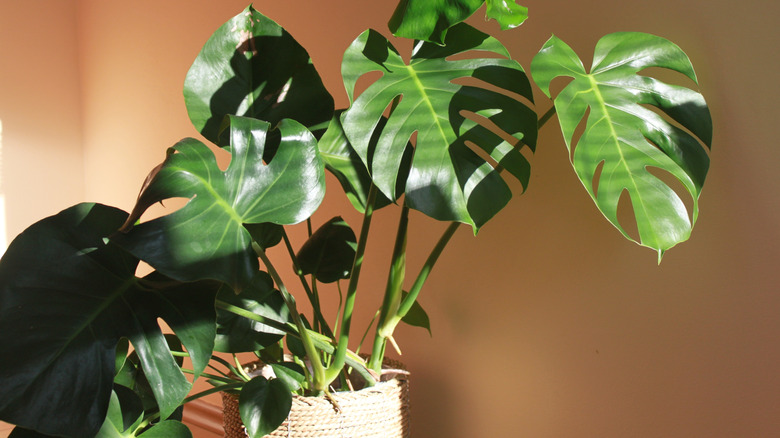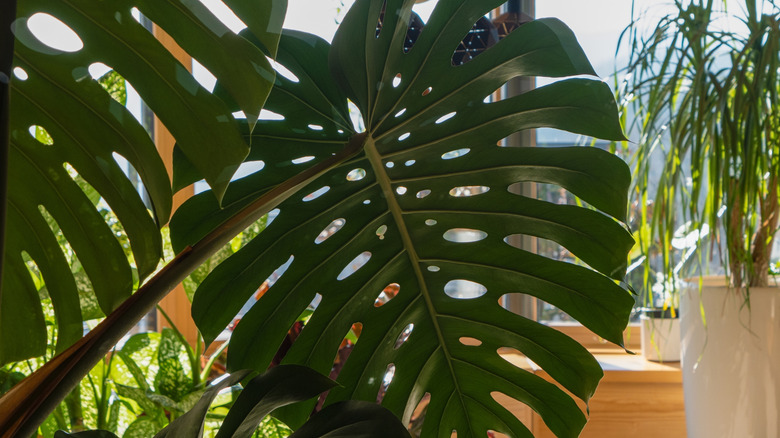Why Your Monstera Leaves Don't Have Splits
It's a staple of tropical gardens across the country, beloved for its glossy green color, massive size, and distinctively holey leaves — missing any of those three things, and it just doesn't seem complete. So it's hard not to be concerned when your monstera (Monstera deliciosa) doesn't have any splits. But like most tropical foliage, these popular houseplants can react very differently when grown indoors. If your "Swiss cheese plant" is looking more like a block of cheddar, it could be a sign that it's growing in less than optimal conditions.
Part of the tropical Araceae family, the monstera is native to Central America. It occupies the shady, humid underbelly of rainforest canopies, extending thick air roots to climb nearby trees. Although monstera rarely tops 10 feet when grown indoors, it can reach nearly 70 feet in its natural setting. Competing for resources in a crowded environment, the monstera plant has adapted to grow additional holes in its foliage, aiding its water intake and wind resistance.
Not to be confused with the natural lobing of the leaf, these holes, called monstera fenestrations, are present on most mature leaves. So if your young monstera is "windowless," it may just need more time to grow. However, if your mature leaves lack splits entirely, they may be trying to communicate a problem. Whatever the reason, though, there's no need to panic. By increasing stability, adjusting light levels, and reassessing how often you water your monstera plant, you can help this tropical behemoth thrive indoors.
Encouraging your monstera to produce fenestrations
Monstera plants begin their life cycle by rooting in the ground. But as they begin to vine, they become epiphytic, meaning they latch on to other plants for support. This hallmark feature of mature monstera plants also serves an important role in its health, as cord-like aerial roots gather nutrients from the air to support its growth. So, if your monstera doesn't have any holes, consider staking your monstera with a vertical support that encourages the plant to grow taller, such as a moss pole.
Your plant might also be lacking fenestrations if it's not receiving the right light. Despite their heat-loving, tropical nature, monstera plants do not thrive in direct sunlight, nor do they grow well in dark corners. Areas with bright but indirect light are best, such as east or south-facing rooms. North-facing rooms, which receive the least amount of light throughout the day, may be a bit too shady. In west-facing rooms, plants may show signs of leaf burn or sun scald.
Once your plant is in the proper location, make sure it's properly hydrated. Since fenestrations naturally help the plant retain moisture, a waterlogged plant may be lacking these characteristic splits. On the flip side, extended periods of dry soil can stunt your plant's growth. Allow the top few inches of soil to dry out between waterings, but don't forget about your supporting moss pole — raising humidity levels with a spritz of water can help keep your monstera plant happy and healthy.

